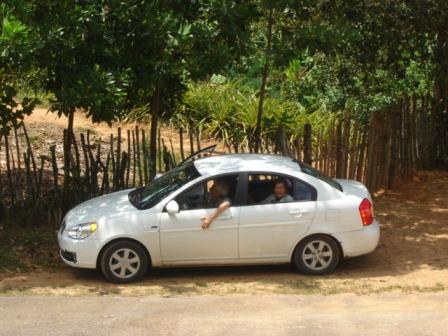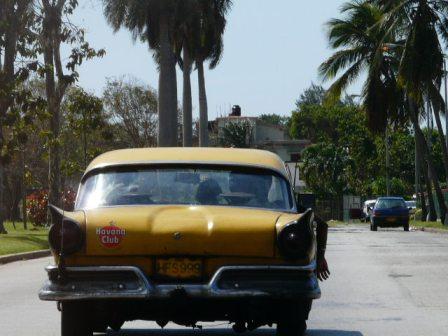How do you get to…?
By Pilar Montes

HAVANA TIMES, April 7 – The most frequent question heard in Cuba, asked by foreign visitors and nationals alike, is probably “How do you get to…?” The question gives Cubans a chance to hospitably guide an outsider through the intricacies of finding a location bearing a saint’s or national hero’s name.
The problem lies in the lack of traffic route information. While on the one hand investment in road signs has been scarce for decades, there is another less official factor: the fashion of putting street signs in a teenager’s room or a streetlight in a backyard to make family and friend reunions more pleasant.
That is in the case of urban areas.
As for rural communities, you may find patriotic slogans and colorful signs telling travelers where a farm, cooperative or even a high school is located, but there is virtually no information as to where you stand on the map, or what distance you are to the nearest town or service station.
For a country without heavy traffic, the island has certainly a big deficit in street lights, signs and pavement marking to guide drivers and pedestrians alike.
Col. Alvio Gil Castillo, an engineer who heads the National Center of Traffic Engineering, recently stated that the country is lacking 375,000 traffic signs and lights (97,500 on roads and freeways and 278,000 in urban areas).
He said the most critical situation was on the national highway that crosses Cuba from west to east, where there are no pavement markings and few road signs to guide motorists.
Many tourists have consequently suffered the experience of being misdirected by patriotic Cubans too proud to admit they really aren’t sure how to get to some city or town in their own country.
Col. Gil noted that in 2008, 2,091 traffic signs were damaged or disappeared altogether. The situation, he added, is expected to be solved by 2013.
Only recently, main avenues in Havana are beginning to have digital traffic lights installed, about a dozen, imported from China. There are also some manufactured in Russia, but the rest-the overwhelming majority-are in a sorry state, barely showing the light changes, or not at all.
Comedians’ Jokes and Real Consequences

For more than a decade, traffic discipline also deteriorated, allowing for violations of one-way streets, partially caused by a lack of stop signs.
Off the main avenues, many streets look like bombed out areas, causing suspension, gears and other parts of the cars to be in constant need of repair.
This is a frequent butt of jokes on TV programs and on the street.
Last year in Cuba, traffic accidents took the lives of 778 people and injured 7,707 – figures that exceeded those reported in 2007. Cuba’s population is just over 11.2 million.
Among the main causes of traffic accidents, according to authorities, were overcrowding on public buses, carelessness, the poor condition of automobiles and streets, and the lack of street signs.
Still, Cuban cities and roads are by far among the safest in the region.
In the Dominican Republic 1,854 traffic fatalities (well over twice that of Cuba) were reported in 2008 among a population of 9.5 million.






I guess I will miss this aspect of Cuba, “when the situation is resolved in 2013” (LOL)! I really don’t mind getting lost, as it is an opportunity to pick up hitch-hikers (something I do less often in my own country). Besides asking–and following–their directions, they often tell me their stories, and even though, with my limited Spanish, listening to these stories is like listening on the radio to a distant station whose signal fades in and out–especially at the “punch line” –still, what parts of their stories I do understand I find imm encely fascinating.